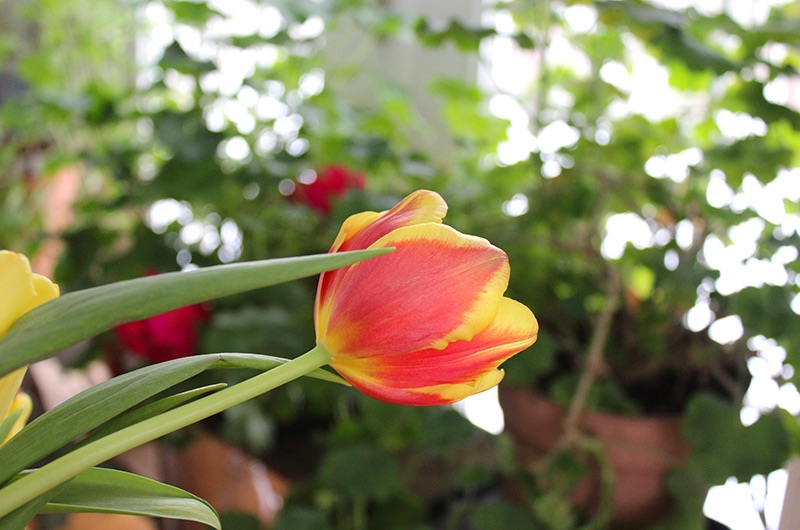
I am writing on four hours of sleep. I think I mentioned in passing that I was aiming to be honest with you, so let’s not waste any time. Here are three things not to do in the evening: Stay on your computer until 11:30 p.m. absorbing the screen’s blue light, which suppresses melatonin; eat a bowl of chocolate chips during this light show; and decide that climbing into bed and reading a riveting, gut-wrenching novel like Sadeqa Johnson’s Yellow Wife will lull you to sleep.
You might perhaps wind up like me, staying awake until 5 a.m. finishing said book.
I didn’t just stay awake; I also tip-toed downstairs to the comfy chair in the living room, where the dog was snoring on the couch and the Scotsman had turned the heat down to a level that would just barely keep pipes from freezing. At least I had a wool hat and a cheap throw.
To improve on this situation, I then decided that drinking a cup of warm milk would be a good idea, because that’s what my grandmother Honey always did when she couldn’t sleep. But I couldn’t resist turning it into a big mug of hot cocoa (at least it was good quality cocoa!), which zeroed out any drowsy-making and put my bladder into overdrive as a bonus.
Looking on the bright side, at least it wasn’t a nip of scotch, neat — a frequent trick during the Before Times that I used to treat sleep disturbance caused by too many evening drinks. Catch the irony there? A vicious circle.
The point is, even though I may be sane, sober, and well-intended these days, I’m still stupid. And stubborn. You?
I listened to a great podcast this week, The True Hard Work of Love and Relationships. On Being’s Krista Tippett interviewed Alain de Botton, the author of the widely read New York Times opinion piece, Why You Will Marry the Wrong Person. In it I was reminded, with relief, of the importance of realizing how imperfect we all are so that we don’t experience the chronic delusion that everyone else’s relationships are better than ours. And more importantly, so we don’t set up ridiculous expectations of our partners. We’re all crazy in some way; if we’re going to make a go of it, we’ve got to accept each other’s craziness, starting with our own.
I bring it up because it never hurts to take a gentle look at the crazy stuff to see if it’s really working for you. And because lately I’ve been thinking that my stubbornness – or insistence on doing (or not doing) things a certain way – can sometimes actually limit my imagination (as well as affect my sleep!).
For instance, how is it that I managed to grow things outdoors for so many years, across three seasons every year, without realizing I could (more or less) recreate the experience indoors in the winter?
It took a pandemic and hibernation to snap my longing (and need) for year-round beauty into focus. In this most wintry of winters, I finally embraced the house plant. Or, more accurately, plants in the house. It started with a collection of scented geraniums I rescued from outdoors — peppermint, orange, lemon, rose — each plant with its own seductive fragrance and uniquely beautiful leaves. Some leaves as soft as bunny ears. But then I bought real houseplants, too. A fern. A jade plant. Ivy. Two fancy rosemary topiaries.

I swear I’ve done nothing more than crowd them all near southern windows and water them sporadically. And I’ve been wildly rewarded. In the breakfast room, we have a sea of soft green leaves blanketing one wall like a living mural. In the bedroom, a tabletop collection of greenery that lights up in the mid-morning sun, casting cartoon shadows on the dog basking on the carpet below.
“Put yourself in the way of beauty,” Cheryl Strayed wrote. I have loved that ever since I read it in a little book of hers called Brave Enough. (You need that book!). But I never stopped to think about how beauty really works. What is the real reason that I love flowers and foliage so much?
Sure, nurturing plants fills a need and assuages anxieties (not inconsequential). But there’s more. It turns out there’s a connection between our vision and areas of the brain where pleasure thrives. Beauty, and its sidekick color, can actually stimulate serotonin production.
Ah ha! No wonder, for one who runs a wee bit under the optimal serotonin levels during the winter (lightbox: check, vitamin D: check, omega 3 fish oil: check), the pleasure of seeing green every morning is so rewarding. The color green supposedly reminds our brains of peaceful and pastoral settings. The color pink (my favorite) is relaxing, blue (the color of our walls) calming. And while I don’t normally lean into yellow, it’s the color of happiness — which may account for the very cheering effect of some bright yellow (and red) tulips that wandered into our house last weekend.
My suggestion? Get thee to a florist, please, and purchase a plant, some flowers, a flowering plant, or a planting flower. That’s the good kind of crazy.
Have a beauty-filled day.

P.S. Thank you to all of you who emailed me last week or commented on the blog after the reboot! So nice to be reconnected. If you feel comfortable, I want to encourage you to post your thoughts in the comments section below, so that we can share conversations with each other.
Read last week’s post: Be the Light! Rebooting the Sixburnersue Blog
Looking for new recipes? Visit cookthevineyard.com and sign up for the free weekly newsletter. (Something I do as part of my day job.)
